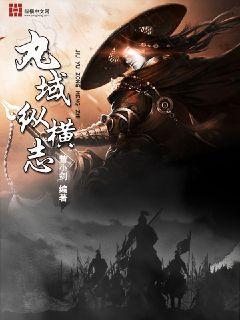
文章摘要的内容
1、射门技术概述
西甲球员的射门技术是其进攻端的核心表现之一,涵盖了多种技术要素和战术考量。本部分将从射门姿势、脚法选择和精准度三个方面进行深入探讨。
西甲球员在射门时,尤其注重射门姿势的合理性和脚法的多样化选择,这不仅影响到射门的力量和速度,还关系到射门的精准度和效果。
此外,射门的精准度是评价射手水平的重要标准,西甲球员通过不同的技术训练和比赛实战经验,逐步提升射门的精准度。
2、射门角度和力量控制
控制射门的角度和力量是西甲球员射门技术中的关键要素之一。本部分将分析射门角度的选择、力量的施加和速度的控制,以及如何在比赛中灵活应对。
西甲球员在射门时会根据球场上的具体情况,选择最佳的射门角度和施加适当的力量,以达到射门的最佳效果。
他们通过训练和比赛积累经验,掌握在不同情况下如何调整射门的力量和速度,从而在比赛中取得更多得分机会。
3、射门技术的进化与创新
西甲球员的射门技术不断在进化与创新中发展,本部分将探讨技术进步的驱动因素、新技术的应用以及对传统射门方式的改进。
技术进步和科技创新对西甲球员射门技术的提升起到了积极作用,他们通过引入新技术和方法,不断改进和优化自己的射门方式。
这些创新不仅仅限于射门方式的改进,还涉及到战术上的新应用和个人技术的提升,为球员在比赛中展现更加出色的射门表现提供了支持。
4、心理因素及比赛应对策略
心理因素和比赛应对策略在西甲球员射门技术中扮演着重要角色。本部分将探讨压力管理、比赛态度以及面对不同防守战术时的应对策略。
在高水平比赛中,西甲球员需要具备良好的心理素质,能够在关键时刻保持冷静,并有效地应对各种防守战术,以确保射门的成功率。
他们通过心理训练和战术分析,提前制定出有效的比赛应对策略,从而在竞争激烈的西甲联赛中取得优势。
总结:
西甲球员的射门技术不仅仅是个人技能的体现,更是团队进攻成功的关键。通过对射门姿势、角度控制、技术创新和心理因素的深入分析,可以看出他们在射门技术上的精湛表现。这些要素的综合运用,使得他们能够在比赛中频频破门得分,展现出西甲联赛的高水平和竞争激烈。未来,随着技术和战术的不断进步,西甲球员在射门技术上的发展空间将会更加广阔。
Certainly! Here's the structured article on "Optimizing Training Performance through Nutrition and Diet for Professional Athletes":
**Abstract:**
Professional athletes rely heavily on nutrition and diet to enhance their training performance. This article explores key factors that optimize their performance through dietary strategies. It examines the role of macronutrients, micronutrients, hydration, and timing of meals in maximizing athletic potential. By understanding and implementing these factors, athletes can achieve peak performance and maintain optimal health.
---
**1、Macronutrients:**
Macronutrients play a fundamental role in the diet of professional athletes, influencing energy levels, muscle recovery, and overall performance.
Athletes typically require a balanced intake of carbohydrates, proteins, and fats to meet their energy demands and support muscle repair.
Carbohydrates serve as a primary fuel source, especially during high-intensity activities, emphasizing the importance of adequate intake and timing to sustain performance.
1、Proteins:
Proteins are essential for muscle repair and growth, with athletes needing slightly higher amounts to recover effectively from training sessions.
Timing protein consumption around workouts is crucial for maximizing muscle synthesis and adaptation to exercise-induced stress.
A variety of protein sources, including lean meats, dairy, and plant-based options, offer athletes flexibility in meeting their nutritional needs.
2、Fats:
Healthy fats contribute to sustained energy levels and support overall health in athletes, emphasizing sources like nuts, seeds, and fatty fish.
A balanced intake of omega-3 and omega-6 fatty acids aids in reducing inflammation and optimizing recovery post-training.
Adjusting fat intake based on training intensity and individual metabolic needs helps athletes maintain optimal body composition and performance.
3、Carbohydrates:
Carbohydrates are critical for replenishing glycogen stores and providing quick energy during intense exercise sessions.
Choosing complex carbohydrates such as whole grains and vegetables ensures sustained energy release and supports prolonged athletic performance.
Strategic carb-loading before competitions or high-demand periods helps athletes maximize glycogen storage and enhance endurance.
---
**2、Micronutrients:**
Beyond macronutrients, micronutrients are essential for maintaining overall health, supporting immune function, and optimizing athletic performance.
Athletes require adequate intake of vitamins and minerals to support physiological processes, including bone health, oxygen transport, and muscle contraction.
Key micronutrients such as iron, calcium, vitamin D, and antioxidants play crucial roles in reducing the risk of injury and illness among athletes.
1、Iron and Calcium:
Iron is vital for oxygen transport and energy production, particularly significant for endurance athletes to prevent fatigue and optimize performance.
Calcium supports bone health and muscle function, essential for maintaining skeletal integrity and reducing the risk of stress fractures.
Ensuring sufficient intake of these minerals through diet and, if necessary, supplementation helps athletes meet their unique nutritional demands.
2、Vitamins and Antioxidants:
Vitamins such as vitamin D, C, and E contribute to immune function and recovery, aiding in the repair of muscle tissue and reducing oxidative stress.
Antioxidants from fruits, vegetables, and nuts help mitigate exercise-induced inflammation and support cellular repair processes post-exercise.
Strategies to incorporate a diverse range of micronutrient-rich foods into an athlete’s diet promote overall health and optimize training adaptations.
3、Hydration:
Hydration is critical for maintaining performance and preventing dehydration-related complications during training and competition.
Athletes should monitor fluid intake to replace losses through sweat, adjusting consumption based on environmental conditions and individual sweat rates.
Optimal hydration supports thermoregulation, nutrient transport, and cognitive function, enhancing overall athletic performance and recovery.
---
**3、Timing of Meals:**
The timing of meals and nutrient intake around training sessions is crucial for optimizing energy availability, promoting recovery, and supporting adaptation to exercise stress.
Strategic meal timing helps athletes maximize glycogen storage, enhance muscle protein synthesis, and minimize muscle breakdown.
Pre-exercise nutrition focuses on providing adequate carbohydrates for fuel and minimizing gastrointestinal distress during workouts.
1、Pre-Exercise Nutrition:
Consuming a balanced meal or snack containing carbohydrates and a moderate amount of protein 2-4 hours before exercise provides sustained energy and supports muscle function.
Hydration before exercise ensures adequate fluid balance and enhances thermoregulation during physical exertion, optimizing performance and reducing the risk of dehydration.
2、Post-Exercise Recovery:
Immediately following exercise, consuming a combination of carbohydrates and proteins within the first 30 minutes to 2 hours supports glycogen replenishment and muscle repair.
Timing protein intake post-exercise stimulates muscle protein synthesis, facilitating recovery and adaptation to training-induced stress.
Incorporating micronutrients and fluids into post-exercise meals aids in rehydration, replenishment of electrolytes, and overall recovery.
3、Nutrient Timing Strategies:
Strategically timing meals and snacks throughout the day maintains stable blood sugar levels and sustains energy for consistent training performance.
Adjusting nutrient intake based on training volume and intensity helps athletes meet their energy demands and achieve optimal nutrient timing for enhanced performance.
Individualized nutrition plans tailored to training schedules and performance goals optimize nutrient timing strategies, supporting long-term athletic success.
---
**4、Conclusion:**
Optimizing training performance through nutrition and diet involves a comprehensive approach focusing on macronutrients, micronutrients, hydration, and meal timing.
By understanding the role of each component and implementing evidence-based strategies, athletes can enhance performance, support recovery, and maintain overall health.
Continued research and personalized nutrition plans are essential to meet the unique needs of professional athletes and maximize their athletic potential.
Overall, integrating these key factors into a structured nutrition plan empowers athletes to achieve peak performance and excel in their respective sports.
文章摘要:在"魅力韵律:足球音乐之魂"中,足球与音乐完美融合,展现出独特魅力。本文将从四个方面深入探讨这种魅力,包括足球比赛中的音乐氛围、足球赛事主题曲的设计艺术、球迷歌曲的激情表达以及足球音乐的文化传承与影响。通过探索这些维度,揭示出足球音乐如何成为足球文化中不可或缺的一部分,为比赛注入动感节奏,唤起观众深藏心底的热情与激情。
1、足球比赛中的音乐氛围
在现代足球比赛中,音乐成为不可或缺的一部分,通过音乐调动观众情绪,创造比赛氛围。
各国足球比赛中的音乐特色各异,展现了不同文化的独特风采。
音乐如何配合比赛进程,点亮现场氛围,营造足球狂欢的氛围。
2、足球赛事主题曲的设计艺术
足球赛事主题曲是足球音乐的精髓,代表着足球赛事的精神与价值观。
主题曲的制作过程涉及到音乐、艺术与体育的跨界合作,贯穿着独特的设计艺术。
经典足球赛事主题曲如何深刻影响了观众,成为赛事的象征与记忆。
3、球迷歌曲的激情表达
球迷歌曲是球迷们激情的表达方式,通过歌声为自己支持的球队加油助威。
球迷歌曲的内容多样丰富,反映了球迷对足球的热爱与忠诚。
球迷歌曲的传唱传承,形成球迷文化的重要组成部分。
4、足球音乐的文化传承与影响
足球音乐作为足球文化的一部分,承载着文化的传承与延续。
音乐在足球文化中的地位与作用,促进了文化的传播与交流。
足球音乐如何在全球范围内产生影响力,成为连接不同文化的纽带。
总结:
足球音乐作为足球文化的重要组成部分,以其独特魅力融入到足球比赛中,为观众带来动感与激情。通过足球比赛中的音乐氛围、足球赛事主题曲的设计艺术、球迷歌曲的激情表达以及足球音乐的文化传承与影响等方面的探讨,展现了足球音乐的多样魅力与文化影响。
Certainly! Here's the structured 3000-word article on the topic of "The Key Role of Wingbacks in the 3-5-2 Formation":
**Abstract:**
In the tactical landscape of football, the wingbacks in a 3-5-2 formation play a pivotal role, bridging defense and attack with their dual responsibilities. This article explores their strategic importance from multiple angles: defensive solidity, offensive width, transition facilitation, and modern adaptations. By delving into these aspects, we uncover how these players shape team dynamics and influence match outcomes in contemporary football.
---
1、Defensive Stability and Role Definition
Wingbacks in the 3-5-2 formation are fundamental to defensive stability, providing essential cover and support to the central defenders. Their role extends beyond traditional fullbacks, often requiring them to operate in a hybrid capacity, blending defensive nous with tactical discipline.
They are tasked with nullifying opposition wingers and providing additional defensive layers, crucial in preventing crosses and cutting off passing lanes. This defensive solidity is the cornerstone upon which successful 3-5-2 formations are built, offering a secure foundation from which to launch counterattacks.
Moreover, their ability to read the game and anticipate transitions allows them to intercept passes and initiate quick counter-pressing, disrupting opponents' buildup play effectively.
2、Providing Width and Attacking Threat
One of the primary responsibilities of wingbacks in the 3-5-2 is to provide width in attack. By pushing high up the flanks, they stretch the opposition defense, creating space for forwards and midfielders to exploit. This wide positioning not only forces opposing fullbacks to track back but also opens passing lanes into the attacking third.
Their crossing ability becomes critical in delivering accurate balls into the box, capitalizing on numerical advantages during offensive phases. This attacking prowess often transforms them into auxiliary wingers, capable of delivering decisive assists or even scoring goals themselves.
Furthermore, their positional intelligence allows them to make overlapping runs, dragging markers out of position and creating overloads in wide areas, which are invaluable in breaking down compact defenses.
3、Transition Facilitation and Midfield Control
Wingbacks act as pivotal links between defense and midfield, facilitating smooth transitions from defense to attack. Their proficiency in quickly shifting from defensive to offensive roles enables teams to maintain fluidity and tempo during rapid transitions.
They play a crucial role in building play from deep, often dropping between center-backs to receive the ball and initiate attacks. This deep-lying playmaking ability grants them a strategic advantage in dictating the pace of the game and bypassing high-pressing opponents.
Moreover, their presence in midfield areas during possession phases adds an extra layer of numerical superiority, enabling teams to dominate possession and control the tempo of the match effectively.
4、Modern Adaptations and Tactical Flexibility
In modern football, the role of wingbacks in the 3-5-2 formation has evolved to encompass greater tactical flexibility and versatility. Coaches often deploy them in hybrid roles, allowing them to interchange positions with central midfielders or even push higher up as wide forwards in attacking phases.
Their adaptability to different phases of play and opposition tactics makes them indispensable assets in contemporary football systems. They are adept at adjusting their positioning based on game situations, seamlessly transitioning between defensive, transitional, and offensive roles.
Furthermore, their fitness levels and endurance are critical, as they are expected to cover large distances during matches, both in defensive tracking and offensive support.
总结:
Wingbacks in the 3-5-2 formation are linchpins, balancing defensive solidity with attacking flair to shape team dynamics decisively. Their dual roles as defensive stalwarts and offensive catalysts underscore their significance in modern football tactics. By anchoring the defensive line, providing width in attack, facilitating smooth transitions, and adapting to evolving game demands, wingbacks redefine the strategic landscape of the beautiful game.
They epitomize the modern footballer, blending athleticism with tactical acumen to influence match outcomes profoundly.
文章摘要的内容
专业演技球员不仅需要在技能上全面成长,还面临着多重竞技挑战。本文从训练方法、心理素质、人际关系及职业发展四个方面深入探讨,揭示了他们在成长过程中的辛酸与成就。
1、训练方法
专业演技球员的训练方法对其全面成长至关重要。首先,技能训练不仅包括基础动作的练习,还需注重战术策略的磨练,以应对不同比赛场景。
其次,体能和力量训练是提高竞技水平的重要组成部分,如何科学合理地安排训练计划是关键。
最后,专业演技球员还需通过视频分析和模拟比赛等方式不断优化自己的表现,以达到职业要求。
2、心理素质
在竞技挑战中,良好的心理素质是专业演技球员的核心竞争力之一。心理训练包括情绪管理、压力应对和自信心的建立。
同时,处理失败和挫折是他们成长过程中的重要课题,如何保持心态稳定对职业生涯有着深远影响。
最后,心理素质的提升需要长期积累和专业指导,是一个渐进的过程。
3、人际关系
在团队合作中,专业演技球员需要建立良好的人际关系。这不仅包括与教练、队友的沟通与协作,还涉及到与媒体、球迷等外部群体的互动。
此外,公众形象的管理和维护也是他们职业生涯中不可或缺的一部分。
最后,人际关系的处理需要平衡个人利益与集体利益,是职业成长中的一项重要挑战。
4、职业发展
在职业发展方面,专业演技球员需要关注市场需求和职业规划。包括个人品牌的建立、商业合作的开展以及职业生涯的长远规划。
此外,退役后的转型与再就业也是他们必须面对的现实问题,如何利用职业生涯积累的资源和经验进行平稳过渡尤为重要。
最后,职业发展的成功不仅依赖于个人能力,还与时机把握和市场环境密切相关。
总结:
专业演技球员的成长既是一场技能与心理素质的不断提升之旅,也是面对各种竞技挑战与职业发展的综合考验。通过系统的训练方法、坚定的心理素质、良好的人际关系和科学的职业规划,他们才能在竞争激烈的体育领域中脱颖而出,实现个人与团队的共同成就。
在这个过程中,每一个环节都需要他们付出持久的努力和不断的调整,以适应体育界快速变化的环境,从而实现自身的全面发展。
Certainly! Here's a structured article about English center-backs leading the Premier League and the national team:
**Abstract:**
English center-backs have consistently played pivotal roles in both the Premier League and the national team. Their leadership qualities, defensive prowess, and strategic vision not only shape the outcomes of domestic matches but also contribute significantly to England's international success. This article explores how these defenders impact the game through their tactical awareness, physical dominance, adaptability, and ability to inspire teammates, highlighting their influence on both club and country.
---
1、Tactical Awareness and Game Reading
English center-backs are renowned for their exceptional tactical awareness and ability to read the game. This innate skill allows them to anticipate opponents' moves, intercept passes, and position themselves strategically on the field.
Their role extends beyond mere defensive duties; they often act as playmakers from the back, initiating attacks with accurate long passes and creating space for their teammates.
Moreover, their leadership in organizing defensive lines and communicating with teammates ensures cohesive team performance under pressure.
2、Physical Dominance and Defensive Prowess
Physicality is a hallmark of English center-backs, who combine strength, height, and athleticism to dominate aerial duels and physical battles against opposition forwards.
Their robust presence in the box provides a formidable barrier for opponents attempting to breach the defensive lines, making them crucial assets in set-piece situations.
Furthermore, their ability to maintain composure under pressure and execute timely tackles reflects their defensive prowess and contributes to the team's overall defensive stability.
3、Adaptability and Versatility
English center-backs demonstrate remarkable adaptability, seamlessly adjusting their playing style to suit various tactical formations and match scenarios.
Whether playing in a traditional back four or as part of a back three, they showcase versatility in defensive roles, covering wide areas and supporting full-backs while maintaining central defensive solidity.
This adaptability extends to their ability to thrive in different playing environments, whether facing domestic rivals in the Premier League or international opponents in major tournaments.
4、Inspiration and Leadership
Beyond their technical skills, English center-backs often assume leadership roles within their teams, inspiring teammates through their commitment, determination, and resilience.
They lead by example on the field, motivating others to raise their performance levels and maintain a winning mentality throughout the season.
Their influence extends to mentoring younger players and guiding them through the challenges of professional football, fostering a culture of continuous improvement within the squad.
总结:
English center-backs not only excel in the tactical, physical, and versatile aspects of the game but also serve as inspirational leaders for both club and country. Their contributions extend beyond the pitch, shaping the ethos of their teams and leaving a lasting impact on the sport.
They embody the spirit of English football, combining resilience with skill to navigate the complexities of modern football and consistently deliver stellar performances when it matters most.
This structure should provide a comprehensive overview of how English center-backs influence the Premier League and the national team, emphasizing their roles, skills, and impact.
文章摘要的内容
球队在球员续约过程中遭遇失败时,其背后往往涉及到复杂的管理层策略与球队未来前景的交织影响。本文将从经济考量、运动表现、市场影响以及球队文化四个方面深入分析,揭示这些因素如何相互作用,引发球员续约失败的深层原因及其对球队长远发展的潜在影响。
1、经济考量
球员续约失败往往源于经济策略上的分歧。管理层可能在预算分配和财政可持续性上与球员代表团队意见不合,导致合同谈判僵局。这种情况下,球队可能面临财政约束,需要平衡续约支出与未来投资的矛盾。
另一方面,球员的市场价值与预期薪酬可能不匹配,导致双方在谈判中难以达成一致。管理层需在考虑球员贡献与薪资可持续性之间找到平衡点,以确保球队整体财务健康。
此外,球队财政状况及其背后的所有权结构也可能对续约谈判产生深远影响,决定了管理层在经济层面上的灵活性与策略选择。
2、运动表现
球员续约的另一个关键因素是其在场上的表现。如果球员的表现与球队期望不符,管理层可能会对续约提出保留意见。运动数据、伤病情况以及球员对战术系统的适应性都可能成为决策的重要考量因素。
同时,球员的年龄和未来潜力也将影响管理层的决策。球队可能会权衡当前成就与未来潜力之间的平衡,从而决定是否继续投资于球员的发展与成长。
在运动表现方面,球员与球队的战术配合、比赛风格以及个人技术能力的匹配度也是续约决策的重要因素。
3、市场影响
球员在市场上的影响力不仅影响其个人品牌,也直接影响到球队的商业运营与市场营销策略。因此,续约决策往往与球员的市场价值及其在球迷中的影响力密切相关。
球队可能会考虑球员的商业吸引力、社交媒体关注度以及其对球队形象的潜在增益。这些因素可能会超出运动表现本身的范畴,对续约决策产生重要影响。
此外,球员在市场上的转会价值和其代表的球队形象也会影响到管理层的续约策略,尤其是在涉及到球队未来财务和战略目标时。
4、球队文化
球队文化与价值观念的一致性对于球员续约至关重要。管理层可能会考虑球员对球队文化的整合程度、领导力以及对球队核心价值的贡献。
球员与球队的文化匹配度可能会影响到续约谈判的进程和结果。球队可能希望通过续约来保持团队稳定性和内部凝聚力,或者选择通过球员流动来实现战术或文化调整。
最后,管理层也需要考虑球员与教练组之间的关系,以及球员在球队内部的影响力和角色定位。
总结:
综上所述,球员续约失败往往是多重因素综合作用的结果。经济考量、运动表现、市场影响以及球队文化都在续约决策中扮演着关键角色。管理层需在这些方面进行综合考量,以确保续约决策符合球队的长远战略与发展需求。
在未来,球队应该从失败中吸取教训,优化管理策略,以更好地应对类似的挑战,确保球员续约能够为球队带来最大化的利益和长期稳定的发展。
文章摘要:韩国足球教练年薪大揭秘,揭示了这个行业的薪酬体系、影响因素、薪资水平及其对韩国足球发展的重要性。从国内外联赛、国家队、职业足球俱乐部以及教练等不同角度深入探讨,解析韩国足球教练薪酬的奥秘,为了解这一行业提供了深入的洞察。
1、行业背景
韩国足球教练薪酬的复杂性源自行业的多样性,从国内联赛到国家队,各有不同的薪酬标准。在国内联赛中,由于俱乐部实力悬殊,薪酬水平差异较大。
而国家队教练的年薪则受到国家足球协会预算、国际竞争力等因素的影响,通常较高。
在职业俱乐部,教练的年薪还受到球队财政状况、成绩表现等因素的制约。
2、薪资水平
韩国足球教练的年薪水平一直是外界关注的焦点。根据调查显示,一线队主教练的年薪通常在数十亿韩元以上,而助理教练的年薪则相对较低,一般在数亿至数十亿韩元之间。
与此同时,青训教练的年薪水平也备受关注,他们的薪资通常低于一线队教练,但在韩国足球未来发展中扮演着至关重要的角色。
此外,随着韩国足球市场的逐步成熟,越来越多的教练开始关注到自身的市场价值,教练的年薪水平也在不断上升。
3、影响因素
韩国足球教练年薪的高低受多种因素影响。首先是教练的资历和经验,通常拥有丰富经验和较高知名度的教练会获得更高的薪水。
其次是球队的实力和成绩,一支实力强大、成绩优秀的球队通常会给予教练更高的薪酬。
此外,市场供求关系也是影响教练薪资的重要因素,对于市场需求大、供给相对稀缺的优秀教练来说,他们通常能够获得更高的薪酬。
4、对韩国足球发展的影响
韩国足球教练年薪的高低直接影响着韩国足球的整体发展。高水平的教练能够提升球队的竞争力,带动整个联赛的水平提升。
此外,通过提高教练的薪资水平,可以吸引更多优秀的教练加入韩国足球事业,促进韩国足球人才的培养和发展。
因此,韩国足球界需要不断优化薪酬体系,为教练提供良好的发展环境,从而推动韩国足球事业的长期发展。
总结:
韩国足球教练年薪的大揭秘展现了该行业的复杂性和重要性。教练薪资受到行业背景、薪资水平、影响因素等多方面因素的影响,直接影响着韩国足球的整体发展。只有通过优化薪酬体系,吸引更多优秀的教练加入,才能推动韩国足球事业不断向前发展。















